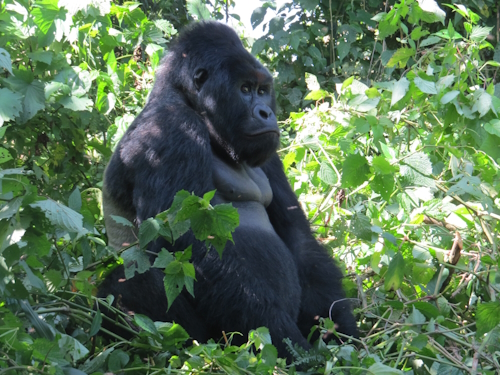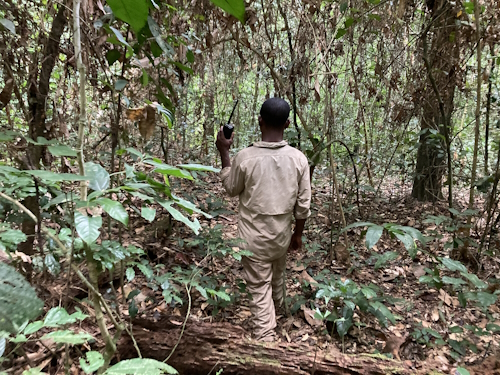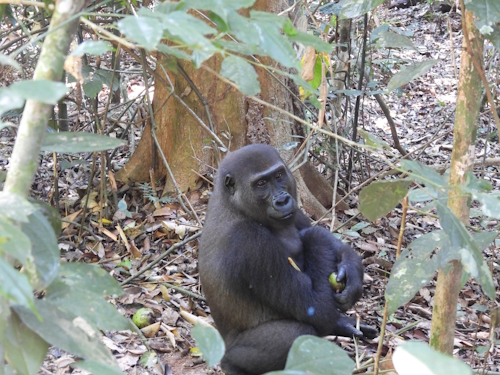Blog Connections
Gorilla (T)WHS
We’ve had the connection Gorilla habitat for a long time, but my recent visit to those at Bai Hokou (C.A.R.) got me thinking we’re missing something there. A fair number of WHS are inhabited by gorillas, but at only a limited amount of places you can actually as a tourist go and see them. They need to have ‘habituated’ groups, which are (extended) families trained to tolerate human presence. The habituation is a very time-consuming process, taking up to 10 years. And when the dominant silverback that you had singled out for this purpose suddenly dies, it all was for nothing as his family group will disintegrate. The habituated gorillas live wild but their location is tracked daily by staff. They also often are the subject of scientific studies.
Gorillas come in 4 ‘types’: they’re split into two main species, Eastern Gorilla and Western Gorilla, and each of those is made up of two subspecies. I’ve tried to make an inventory of at which WHS and TWHS you can visit them:
Eastern Gorilla
Eastern Gorillas live in the Democratic Republic of the Congo, Rwanda and Uganda. The species is subdivided into mountain gorillas and eastern lowland gorillas.
Mountain Gorillas
This subspecies has the lowest number of remaining individuals (ca. 1,000) but they are well in the public eye, not critically endangered anymore and are relatively easy to visit. Photo 1 shows a mountain gorilla silverback at Virunga.
- Bwindi (Uganda) is probably the main location, with 9 habituated families and a cost of 700 USD per visit.
- Virunga (DRC) has 10 of them, but the park is unfortunately closed at the moment and often right in the zone of conflict.
- The nearby TWHS of Mgahinga (Uganda) has 1 habituated group.
Volcanoes NP (Rwanda) has 12 habituated families (and the most expensive ones at 1500 USD a visit), but it’s not on Rwanda’s T List.
Eastern Lowland Gorillas
The main location here is Kahuzi-Biega (DRC). Unlike other WHS in the DRC, this park is almost always accessible as it lies near the Rwanda border. About 250 individuals live in the park. Reports vary between 2 and 5 considering the number of habituated groups. A trek to see them costs 400 USD.
Virunga has eastern lowland gorillas as well, but only 7 individuals are said to remain and they are not habituated.
Western Gorilla
Western Gorillas are much more numerous than their eastern counterparts. Especially after the incredible story broke a few years ago “that around 125,000 previously unreported gorillas had been found living in the swamp forests of Lake Tele Community Reserve”. However, there are few locations where they are habituated to human visitors. They are still critically endangered, mainly due to their susceptibility to disease (ebola) and lack of overall protection. The species is subdivided into Western Lowland Gorillas and Cross River Gorillas.
Western Lowland Gorillas
- A prime location is Sangha Trinational: Dzangha Ndoki (C.A.R.) has one habituated group left and is working on a second, while Nouabele Ndoki (Congo) has four. In both parks, gorillas are sometimes also seen visiting the bai's (forest clearings).
- Odzala WHS (Congo) has two groups habituated for tourists (and one for scientists).
- Loango TWHS (Gabon) has one habituated group.
- Moukalaba-Doudou TWHS (also Gabon) does as well.
There seem to be no habituated groups among the gorillas at Dja Faunal Reserve (Cameroon) and Ivindo (Gabon), although the latter’s Langoue Baï is regularly frequented by wild gorillas and they can be observed from a viewing platform. Lopé-Okanda (Gabon) has had a habituation program but it seems to have been stopped according to some sources while other tour operators still offer it.
Photo 3 shows a young female western lowland gorilla in the Bai Hokou area of Dzangha Ndoki.
Cross River Gorillas
This subspecies is limited to a very small area, the Cameroon-Nigeria border region at the headwaters of the Cross River. There are no WHS in this area. The transboundary TWHS Cross River (CRIKOT) covers the gorillas, but there are no habituated groups.
Does it harm or benefit the Gorillas?
The researcher that I spoke to at Bai Hokou (part of Sangha Trinational) regarded the gorilla habituation program there as a positive thing: it raises awareness for the conservation of gorillas (as visitors will talk about it when they're home), it provides funds for conservation and research, and jobs for the local community. The programs also may deter poachers. The main cons are that it may stress out the gorillas (especially at the beginning of their habituation they flee from humans) and that humans can transfer diseases to them. However, there seems to be no widespread opposition to the practice and the income from the often expensive trekking permits for a high percentage goes back to conservation (numbers around 75% have been stated).
Did you see wild gorillas in other places? Have you ever had a chance encounter with a wild gorilla outside of a habituated group?
Els - 28 January 2024


